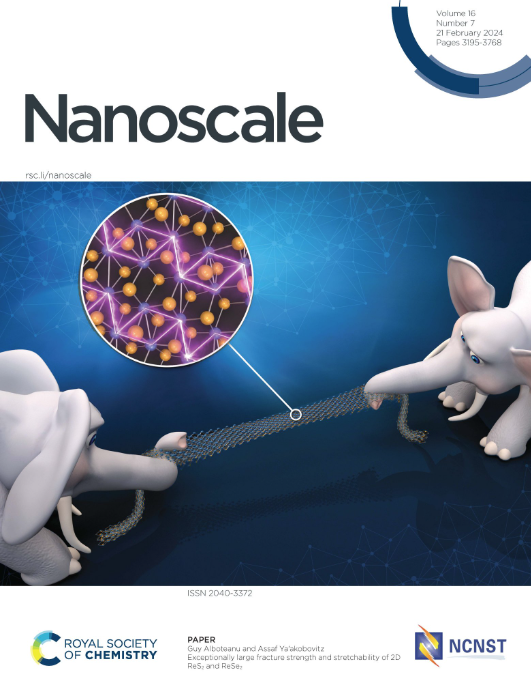Evidence of Au(111) topological states in a kagome analogue lattice and their robustness beyond ultra-low temperatures and defect-free conditions
IF 5.8
3区 材料科学
Q1 CHEMISTRY, MULTIDISCIPLINARY
引用次数: 0
Abstract
The experimental realization of kagome lattices that exhibit the predicted coexistence of topological states with high electron kinetics and non-dispersing quantum states remains challenging. Additionally, the robustness of these states against structural perturbations has rarely been explored. Here, we report on the formation of an analogue kagome structure via the electrostatic self-assembly of 4,7-dibromobenzo[c]-1,2,5-thiadiazole (2Br-BTD) molecules on Au(111). Local spectroscopic measurements, supported by theoretical calculations, reveal that the weak molecular coupling reshapes the topological-induced Shockley surface state of Au(111) by imposing a (7x7) periodicity resulting in new band crossings. The molecular overlayer favours the opening of electron gaps at these positions manifested as sharp peaks in dI/dV spectra and electron localization in either the hexagonal or triangular sublattices of the kagome structure. To explore the robustness of these topological states, we monitored their stability under varied conditions, including different temperatures, the unaltered herringbone reconstruction of the Au(111) surface and local structural relaxation of the molecular assembly. These results demonstrate the degree of topological protection of these states, which holds potential for fundamental and applied research.kagome模拟晶格中Au(111)拓扑态的证据及其在超低温和无缺陷条件下的鲁棒性
kagome晶格表现出预测的具有高电子动力学和非分散量子态的拓扑态共存的实验实现仍然具有挑战性。此外,这些状态对结构扰动的鲁棒性很少被探索。本文报道了4,7-二溴苯并[c]-1,2,5-噻二唑(2Br-BTD)分子在Au(111)上的静电自组装形成了类似的kagome结构。在理论计算的支持下,局部光谱测量表明,弱分子耦合通过施加(7x7)的周期性导致新的带交叉,重塑了Au(111)的拓扑诱导的肖克利表面态。分子覆盖层有利于在这些位置打开电子间隙,表现为dI/dV谱的尖锐峰和kagome结构的六边形或三角形亚晶格中的电子定位。为了探索这些拓扑状态的稳健性,我们监测了它们在不同条件下的稳定性,包括不同温度、Au(111)表面不变的人字重建和分子组装的局部结构弛豫。这些结果表明了这些状态的拓扑保护程度,具有基础和应用研究的潜力。
本文章由计算机程序翻译,如有差异,请以英文原文为准。
求助全文
约1分钟内获得全文
求助全文
来源期刊

Nanoscale
CHEMISTRY, MULTIDISCIPLINARY-NANOSCIENCE & NANOTECHNOLOGY
CiteScore
12.10
自引率
3.00%
发文量
1628
审稿时长
1.6 months
期刊介绍:
Nanoscale is a high-impact international journal, publishing high-quality research across nanoscience and nanotechnology. Nanoscale publishes a full mix of research articles on experimental and theoretical work, including reviews, communications, and full papers.Highly interdisciplinary, this journal appeals to scientists, researchers and professionals interested in nanoscience and nanotechnology, quantum materials and quantum technology, including the areas of physics, chemistry, biology, medicine, materials, energy/environment, information technology, detection science, healthcare and drug discovery, and electronics.
 求助内容:
求助内容: 应助结果提醒方式:
应助结果提醒方式:


